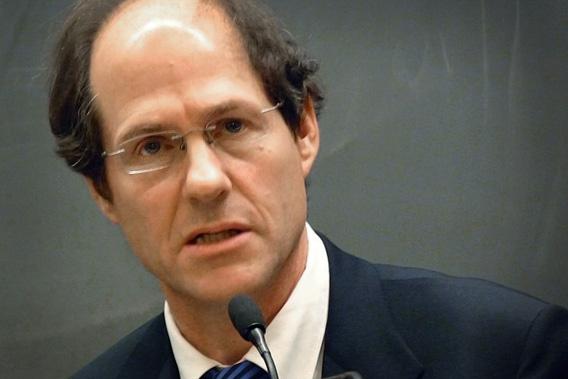Cass Sunstein, nudge inventor and former White House official, explains how his nudges have helped Americans save for retirement and eat better. He co-wrote the best-selling 2008 book Nudge: Improving Decisions about Health, Wealth, and Happiness with Richard Thaler. His latest book Simpler: The Future of Government is about using behavioral science to transform government.
When you published Nudge in 2008, did you expect it to have so much influence?
No. We were trying to write the best book we could. I was surprised and gratified that it got such attention.
You went on to head up the White House Office of Information and Regulatory Affairs. What was the most effective nudge that you implemented?
Automatic enrollment in retirement savings plans has had a major effect. If you have to sign up, it’s a bit of a bother. People procrastinate or go about other business. Then they have less money in retirement. With automatic enrollment, you’re more likely to be comfortable when you retire.
How many U.S. citizens have been nudged that way—and do they know it?
A very large number. Automatic enrollment is a common practice now; many millions of people have benefited from it. People recognize they’ve been automatically enrolled—there’s nothing secret about it, and it’s explained by employers. But they wouldn’t think, “I’ve been nudged.”
Don’t they have a right to know?
I don’t think it’s very important that people support the idea of nudging in the abstract. I think it’s important that policies be helpful and sensible.
What other policies did you design during your time at OIRA?
In the United States, the principal icon for informing people about healthy food choices was known as the food pyramid. It was very confusing. We now have the food plate, which is more intelligible, and we believe it’s leading to more informed choices.
We also had a situation in which poor children who were eligible for free meals weren’t getting them because they had to enroll. We automatically enrolled them, and a lot of kids are now getting food who otherwise wouldn’t.
How do you design a nudge?
It’s a problem-centered approach, rather than a theory-centered approach. So if we had a problem of excess complexity making it hard for people to make informed choices, the solution would be to simplify. If people aren’t enrolled in a program because it’s a headache to sign up, automatic enrolment seems like a good idea.
Is nudging generally preferable to strategies like taxes and prohibition?
The advantage of a nudge is that it’s more respectful of freedom of choice. It always belongs on the table, but if you have a situation where, say, polluters are causing health problems, some regulatory response is justified—a criminal sentence or a civil fine.
Can nudging solve complex, long-term problems such as climate change?
Climate change needs international efforts. You can make progress by informing people of greenhouse-gas emissions associated with their car, or through default rules, like lights going off when no one is in a room. But nudges are unlikely to be sufficient.
Can nudges lead to lasting change?
There is good research on the circumstances under which using social norms result in persistent instead of short-term behavioral change. With respect to energy use, so long as people are frequently reminded, it works.
How much further can nudging go?
I think it’s important not to get too fixated on the word nudge. Part of the reason the book did well is that it has a catchy title, but I’d like to think the better reason is that it has solutions to problems. The use of these tools has produced terrific results in a short time—and we’re at the tip of the iceberg.
This article originally appeared in New Scientist.
